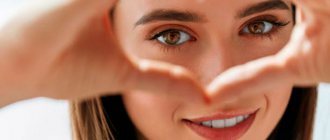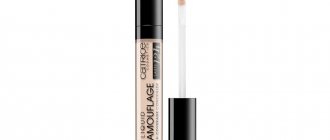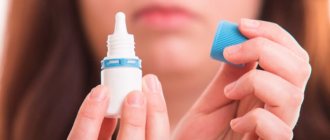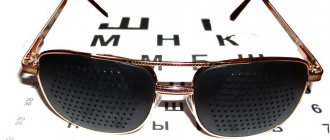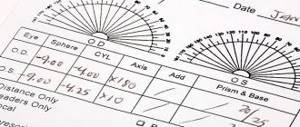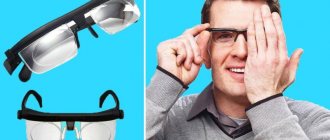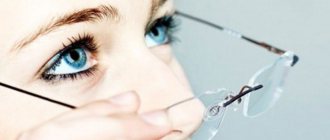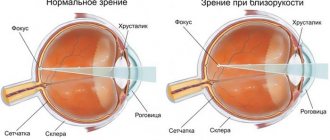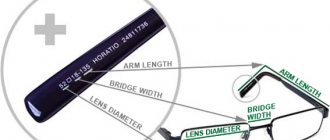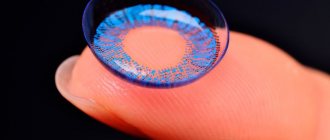Let's talk about how to use glasses to improve the quality of life of a motorist
- Daytime driving glasses Vision and driving safety
- Visual driving conditions
- Types of spectacle lenses
- Briefly about the perception of light
- Visual needs of presbyopic drivers
Driving is a complex activity that requires the use of a variety of high-level intellectual skills, including memory, visual processing, attention, and familiar driving techniques. A person driving a vehicle must navigate a rapidly changing road situation, estimate the distance to cars driving next to him and towards him, recognize the signs and colors of vehicle regulation and at the same time monitor the readings of sensors on the dashboard, be able to answer mobile phone calls and check the direction of travel on a map or navigator, and often also monitor the behavior of children in the back seat. This list of just some of the driver’s most frequently performed actions indicates that high visual acuity is important for him at all distances - from far to near, at any time of the day and in any weather conditions.
When prescribing certain glasses, or rather spectacle lenses, to a driver, the following driving conditions must be taken into account: daytime, fog, twilight and night time.
At the same time, the difference in illumination affects the driver’s visual acuity and the contrast of surrounding objects. What glasses, or rather spectacle lenses, are best suited for driving and what can manufacturing companies present on the Russian market offer drivers today?
Driver points rating
Our team considered time-tested manufacturing companies. Experienced car owners and drivers with extensive driving experience took part in the selection of nominees. It was their knowledge that weeded out goods of dubious quality. Next, we assessed the remaining ones for a number of characteristics:
- Type of glasses;
- Glass color;
- Materials;
- Additional anti-glare coating;
- Level of protection against UV rays;
- Level of light transmittance, tinting;
- Glass size, viewing angle;
- Lightweight, strong support;
- Correct fastening of the earhooks;
- Price, performance.
The result of the comparative analysis was a top list of 8 positions. For convenience, we have divided it into 3 categories - these are anti-glare, polarized models, and anti-headlight glasses. Reviews from customers and owners determined what strengths and weaknesses each product has.
How are they different from regular glasses?
At first glance, driving glasses are not much different from regular sunglasses or vision glasses. However, it is not. Polarized lenses reflect the headlights of oncoming cars and bright light from the sun, protecting your eyes from harmful effects.
They improve the viewing angle.
Their advantages:
- perfectly removes glare;
- reduce light intensity;
- increase the contrast of images;
- reduce eye fatigue;
- Recommended for wearing by people with light hypersensitivity.
To check whether your glasses actually have a polarizing filter, ask the seller for another identical lens and place it perpendicular to the other. A color change will occur. It will turn from a transparent lens into a dark one, through which nothing can be seen.
The best anti-glare glasses for drivers
The first category of glasses rating for drivers represents models with anti-reflective coating. Their main function is to protect against the reflection of flickering, shiny objects - headlights of oncoming cars, wet asphalt, windshield. According to VyborExpert, 2 nominees became the best.
HD Vision Wrap Arounds
The first position is occupied by yellow glasses for unisex drivers, harmonizing colors and pictures. Intended for use both during the day and at night. Manufacturer: Chinese.
The lenses are made of flexible oval-shaped plastic. Anti-glare tinting coating, enhanced with a UV filter. The design is rimmed with a plastic frame in black color, combined with yellow glasses. In addition to protection from bright glare, contrast increases in rainy weather, fog, and snowfall.
Lightweight, comfortable, they are combined with corrective glasses with diopters. They fit comfortably over the plastic frames of vision glasses and do not exert pressure. Even xenon headlights are protected from glare.
Advantages:
- Anti-glare coating;
- Tinting;
- Light filter;
- Good fit on the frame with diopters;
- Effective against xenon headlights;
- Lightness.
Flaws:
- Opaque side panels;
- Polarization is minimal.
The product comes with a case and a special cloth to wipe away dust and other contaminants. A bonus is protection from the wind. Folding arms make storage easy, saving space.
Grand Voyage 1701
The second position is occupied by stylish yellow glasses without diopters, guaranteeing 100% UV protection. Glare reduction is provided by the polarizing coating. Manufacturer: Chinese brand “Grand Voyage”.
The oval lenses are made of plastic, the silver frame is made of metal with rubberized temples for a strong fit. Ultraviolet coating against sun rays, tinting to adjust light transmission, anti-glare against glare. The design is rim-shaped, any lenses can be inserted inside it.
This model imitates regular sunglasses in appearance. Thanks to this design, it is suitable for both women and men and can be combined with different clothing styles.
Advantages:
- Design;
- Versatility;
- Alternative to sunglasses;
- Comfortable frame;
- High UV protection;
- Inexpensive.
Flaws:
- Prolonged wearing puts pressure on the bridge of the nose;
- More comfortable in the evening than during the day.
You can use this accessory against the glare of wet asphalt, oncoming headlights, during twilight, precipitation, and fog. It reduces stress, fatigue, and normalizes the condition of eye tissue. Metal frames can be stressful when worn for a long time.
The best anti-headlight glasses for drivers
Anti-headlight glasses for drivers are another current type, which is why it is included in the third category of the rating. You can wear it at any time of the day, but if there is no polarization, it will be more comfortable in the evening and at night. This type of optics promises increased contrast, protection from glare, and prevention of eye fatigue.
SPG Premium AD063
The sixth top ranking is represented by a nominee imitating teardrop-shaped sunglasses. It received good marks for its high impact resistance and versatility. Country of origin: Russia.
The first thing that catches your eye is the thin, elegant frame. The rim design is made of durable metal. Oval yellow plastic lenses. Driver safety is guaranteed by a UV filter in the UVB-UVA range, tinting, and anti-glare coating. The temples are rubberized for a comfortable fit.
Glasses are recommended for poor visibility conditions - fog, twilight, night time. They increase the degree of contrast and detail the picture. They also additionally prevent glare from headlights and fatigue from long driving.
Advantages:
- Large glasses;
- Thin, lightweight frame;
- Multifunctionality;
- Impact resistant materials;
- Increased clarity, contrast;
- Design.
Flaws:
- Price;
- They run small.
This is a reliable salvation from visual fatigue due to long driving. Supplied inside a case, which is convenient for further storage. Nose pads are adjustable.
Mystery 0151
The review ends with the ninth model, which is completely different in materials, shape, and design from the previous nominees. These are rectangular driving glasses from the popular Chinese brand “Mystery”.
The rim design is made of silver metal. It is distinguished by the folding shape of the arms and the ability to adjust the nose pads. The lenses here are yellow, rectangular, and made of glass. On top of them there is an anti-reflective coating and tinting for color correction.
The nominee will effectively reflect headlights without causing glare. In addition, filters make the picture clear, detailed, sharp even in foggy, rainy weather. Anatomically shaped rubberized temples ensure a comfortable fit.
Advantages:
- Glass lenses;
- Rectangular frame;
- Strict, laconic style;
- Anatomical shape of the structure;
- Comfortable wearing;
- High quality.
Flaws:
- The tone is lighter than in the picture;
- No case.
This nominee was included in the review due to the durability of the materials. And this is the only rectangular frame in our review; it is perfect for the classic business style of clothing.
Night driving glasses
Briefly about the perception of light
Clear vision requires light to stimulate the vision process. In order for an object to be clearly visible in the field of view, it must be lighter or darker than its surroundings. The driver's reaction time is 90% dependent on vision; at night, the quality of vision (perception of spatial depth, color recognition, peripheral vision) deteriorates significantly. The perception of light is due to photochemical processes occurring in the photosensitive elements of the retina - rods and cones. The rods are located on the periphery of the retina, and the cones, which are almost 17 times smaller, are in the central zone. Cones enable the discrimination of detail and color. Rod receptors do not detect color, but are more sensitive to light. Thanks to the presence of two types of receptors, the human eye adapts to different lighting conditions. The increase in retinal sensitivity occurs gradually, depending on the length of time a person remains in the dark. The speed of adaptation for rods and cones is different: for cones, maximum sensitivity occurs 5–8 minutes after the start of dark adaptation, for rods – after 60–80 minutes. The weakest light at which rods begin to function is equivalent to the conditions of night when the sky is overcast, for cones it is the conditions of moonlight at night. The white light that the rods begin to detect must become 1,000 times brighter to be perceived by the cones.2 The intensity of sunlight is about 30,000 times greater than that of the moon. The human eye can function in different light conditions, and the sensitivity of the retina is affected by various damaging factors, for example, exposure to the sun without sunglasses, laser radiation, etc.
Risk factors for night driving
Reduced image contrast This factor is most significant when driving at night. Lower light levels cause the pupil to dilate to 4–7 mm. In this state of the pupil, all the shortcomings of the vision focusing system appear, which do not reveal themselves under normal conditions, with a smaller pupil. It should be noted that contrast can be affected by light reflections from windshields, eyeglass lenses and other objects. To improve contrast, it is important that any transparent medium through which the driver is looking is as clear and clear as possible.
If a driver notices that his vision becomes less clear at night, he should contact a specialist and check how well his glasses or contact lenses meet the requirements for adequate vision correction.
Night myopia Some time ago, the term “night myopia” was introduced into scientific circulation.
Studies have shown that in poor lighting conditions, even young drivers with good vision focus their eyes on a closer distance (about 1 m), that is, they temporarily become myopic. Although the causes of this condition are still not fully understood, it has been established that night myopia affects visual acuity and image contrast. It is believed that the tendency to focus the gaze at a closer distance when the pupil dilates due to low light levels arose in the process of human evolution. Perhaps those of our mammalian ancestors who could more clearly discern danger at close range at night showed greater ability to survive. Over millions of years, this feature has been hereditarily fixed at the genetic level.4 In addition, at low levels of illumination, the maximum spectral sensitivity of the eye shifts to a shorter wavelength region, which also contributes to focusing the gaze at a closer distance.4 A dilated pupil is characterized by greater spherical aberration : rays passing through the peripheral zone of the dilated pupil are focused in front of the retina, rays entering through the center are focused on the retina. This contributes to the loss of image clarity and the occurrence of some myopia. Thus, night myopia is caused by a number of factors, each of which contributes to a decrease in visual acuity and contrast sensitivity at night. Some experts have advised the use of stronger glasses to prevent nighttime myopia, but the use of corrective glasses or contact lenses in these conditions is currently not recommended. The level of illumination on most highways allows the eyes to function normally. Glare from glare At night, drivers are at serious risk when the headlights of oncoming vehicles shine in their eyes. This lighting has an adverse effect on visual functions (even temporary blindness). We have already indicated that light adaptation occurs very slowly and can be lost within a few seconds of exposure to bright light.
Halos and reflections Some drivers note the formation of halos or reflections around light sources at night. They often occur when the eyes are exposed to the headlights of an oncoming car. The reason for the appearance of halos and reflections may be due to the presence of dirt on the outer or inner surface of the car windows. These contaminants cause intense light scattering. You should also pay attention to the spectacle lenses used: their surface must be immaculately clean and free of scratches, which also cause light scattering.
Lenses recommended for driving at night
In order to make correct recommendations for the use of spectacle lenses in dark conditions, we must divide drivers into two categories: drivers who have good vision and do not suffer from refractive errors, and drivers with refractive errors. The first thing you should not recommend is any spectacle lenses, since the appearance of any spectacle lens in front of a healthy eye will, at best, not give any effect, but can be harmful, since it will additionally affect the contrast of the image. If the driver suffers from refractive errors and wears corrective glasses, he can be offered colorless lenses with anti-reflective coatings. These coatings reduce reflections from lens surfaces and increase light transmission of lenses (more than 99%), that is, they increase the amount of light reaching the eyes. Researchers have shown that in conditions simulating night driving, lenses with anti-reflective coatings allow drivers to better see the road ahead by increasing light transmission and reducing cluttering reflections. They also provide greater visual comfort and less eye strain.5 For night driving, it is not prohibited to use photochromic lenses with an antireflection coating, as long as they have no residual light absorption and are characterized by a high light transmittance that is sufficient in the given conditions.
However, if the driver does not normally wear glasses, lenses with anti-reflective coatings, like any other, will not improve his vision at night. Anti-reflective coatings affect the properties of the lenses themselves.
If you have good vision, the use of glasses will only introduce certain restrictions on its quality.6
Recently, several companies have released eyeglass lenses that take higher order aberrations into account in their design. These are lenses optimized using i.Scription (Carl Zeiss Vision International), WAVE (Essilor Group) technologies. It is known that it is high-order aberrations that cause the deterioration of contrast at dusk and at night when the pupil dilates in low light conditions; they also lead to double image, lack of clarity, the formation of a halo around light sources at night, etc. Eliminating or minimizing these aberrations will have a positive impact on the quality of vision of glasses users and especially drivers who drive at night. According to Carl Zeiss Vision International, the use of the i.Scription optimization algorithm dramatically improves the quality of vision correction by taking into account high-order aberrations in the design and production of lenses. They were obtained on the basis of data recorded on a measuring device - the i.Profiler wave aberrometer (Carl Zeiss Vision International). An examination with this device can be decisive in cases where the driver complains of decreased vision when driving at night, but a normal vision examination does not reveal refractive error, reports Carl Zeiss Vision International.
Limited use of tinted lenses
Anyone who tries to search for “night driving glasses” or “night driving glasses” on the Internet will find a huge number of offers of similar products from domestic and foreign distributors. Here are some examples:
- “These incredible night glasses were designed specifically for night driving. Special window tinting allows you to see further, better, clearer and makes tiring night trips easier. Order these night glasses right now, because the need for an overnight trip can arise at any moment” (www.euroshop.ce.ru).
- “Relaxation driving glasses are specially designed both for driving in poor visibility conditions (fog, rain) and for night driving (with an “anti-headlight” effect). Lenses-light filters for driver's glasses provide a significant increase in the contrast sensitivity of the eye (30–35%) and are effective in reducing the level of glare from the headlights of oncoming traffic" (www.prizyv.ru).
- “Night Vision Clip-On Glasses. Improve your vision, reduce glare, and sharpen your eyesight at night with our Night Vision Glasses. Thanks to the amber lens of these Night Vision glasses, you'll not only cut the glare, but also the risk of accidents" (www.amazon.com).
- “Polarized Sunglasses improve your night and distance vision, enhance your perception and eliminate eyestrain. Unique sunglasses utilizing technology developed by NASA scientists. Regular price: $29.95. Sale price: $19.95" (4-asseenontv.stores.yahoo.net).
The proposed “night driving glasses” are equipped with yellow lenses, which cut off the short-wave blue component of the visible spectrum, or amber lenses, which cut off the blue region and reduce the light transmission of the lenses in the rest of the spectrum, or polarized lenses. How justified is their use at night? Let us remind you that according to international standards, the use of spectacle lenses with a light transmission of less than 80% in the dark is not allowed. Unfortunately, most proposed “night driving glasses” do not provide relevant data, but the limitations of the standards limit the number of possible options. Therefore, only very lightly colored glasses should be used, since even a small amount of light absorption will reduce the amount of light reaching the driver's eyes. Due to the increase in contrast, objects on the road in the area illuminated by the car's headlights appear clearer, giving the driver the impression that he sees objects at a greater distance. This is not true and may lead to an incorrect assessment of the traffic situation. The literature7 indicates that “yellow night driving lenses” do not provide any benefit for night vision. Moreover, they are even dangerous, as they give the driver a false impression that he sees better. Studies have shown that these lenses interfere with visual performance and slow vision recovery after blinding. Many manufacturers actively offer such glasses for night driving, claiming that amber lenses improve night vision. However, the US Federal Trade Commission has indicated that such activities are illegal, since the effectiveness of the lenses in the above cases has not been proven.8 However, some foreign optometrists do not object to the use of yellow glasses, but believe that young drivers can use them on well-lit roads, such as in the city, and should be removed if the road is poorly lit. In older drivers, the pupil itself allows less light to pass through, so they need to be told that reducing the amount of light entering even more will not help them see in the dark.
The use of glasses with polarized lenses at night is generally unacceptable. According to Younger Optics, the light transmittance of a quality polarizer cannot exceed 44%, which makes polarized lenses unsuitable for night driving. Manufacturers of night driving glasses indicate that their products protect the eyes from being dazzled by the headlights of oncoming vehicles. However, glasses suitable for night driving with 80% light transmission only cut out the blue part of the visible spectrum. Their effectiveness would be justified to some extent if the headlights of the oncoming car were blue. However, only xenon headlights provide blue-enriched light. They differ from halogen and conventional headlights in their greater light flow and illumination angle, and less glare.
Responsible opticians will not recommend the use of tinted, polarized lenses, or photochromic lenses with residual light absorption for night driving, nor will they participate in the promotion of “glasses for night driving.”9
The Sunglass Association of America (SAA) does not recommend the use of sunglasses for night driving. Although amber lenses may provide greater driver comfort, they reduce visibility on unlit roads.
How to choose glasses for drivers
Which glasses to choose for a driver can be determined by several characteristics - the color of the lenses, their technology, materials, light transmittance and ease of use. Let's take a closer look at each point.
Lens color
Driving glasses with a polarized effect primarily differ in the color of the lenses. This indicator determines for what wearing conditions they are suitable. For example:
- gray – a universal accessory for everyday use while driving and outside the car;
- blue - the best option for trips near various bodies of water or the sea coast, when the owner often encounters water;
- yellow - the most popular model, driver's glasses for night driving, where the filter clears the light from headlights and street lights, increasing the visibility of road markings;
- light brown - an alternative to models with yellow filters, glasses for the driver day and night with increased contrast without eye fatigue.
The first option is the most practical, compatible with different operating conditions and user image. The second is recommended for those who often encounter glare from bodies of water. The third is suitable for night trips, the last is versatile, comfortable and affordable.
Lens technology
Based on lens technology, several types of driver's glasses are considered:
- anti-headlights - they are designed to improve the visibility of the road in any weather, often made of polymer plastic, can be night or day, protect from headlights, UV rays, glare from the windshield, and water surfaces;
- polarized - multilayer lenses protect against the negative effects of the sun's rays and prevent glare, but only during daylight hours;
- anti-reflective - a universal type of optics with a large selection of lens colors and degrees of tint, intended for sunny weather, a special coating prevents glare.
Which option to choose depends on the operating conditions of the accessory, as well as financial capabilities. The best is, of course, the first option, but it will cost more than the other two.
Lens material
Lens material can be of 2 types - glass or plastic. The stereotype that original polarized glasses must have glass lenses, and plastic is a cheap craft, is actually wrong.
Modern manufacturers widely use plastic, which is in no way inferior to glass. It is good because it is lighter in weight, and wearing glass models for many hours can cause discomfort.
Light transmission
This parameter is responsible for the level of lens tint. There are 5 levels, starting from 0, ending with 4. To protect against ultraviolet rays of the sun, 2-3 levels with a light transmission of 43 to 8% of light will be sufficient. The highest level with intense tint has only 3-8% light transmittance.
Ease of use
To choose a comfortable model, you need to try on the options in person. If you plan to buy glasses in an online store, do not save. Only original, high-quality products will meet your expectations.
How do night driving glasses work?
It is better for the driver to choose glasses based on the prevailing driving conditions and his own preferences. On the other hand, universal type optics will help you drive a car in bright sun, twilight, and darkness.
When choosing anti-headlight glasses, it is important to take into account such a parameter as “polarization”.
Thanks to properly selected eye devices, the driver avoids glare, reflections from the windshield, wet asphalt, and the direct impact of the headlights of oncoming traffic is reduced. This is achieved due to the polarization effect, which allows the eyes to quickly recover from blinding, protecting the retina from damage.
Instances for night driving increase image contrast, improve visibility on the road, reducing eye strain to a minimum.
See also:
What are the best low beam lamps?
Which driving glasses are best?
So, you've just met the leaders of 2021. All that remains is to make a choice based on the criteria described, which one to buy. If you are still undecided, we suggest going through several Vyborexperta.ru nominations:
- HD Vision WrapArounds – effective protection against xenon headlights day and night;
- Grand Voyage 1701 – high level of ultraviolet protection;
- Night View NV Glasses – better visibility at night;
- Night View NV Glasses – a stylish design option for women;
- Cafa France S82065 – the highest polarization indicator;
- Mystery 0151 – the most purchased anti-lights, the people's choice.
The goal of our top ranking was not only to introduce you to win-win shopping ideas in 2021. We have shown the correct guidelines when evaluating such products, based on what specific characteristics you could choose glasses for driving wisely without the risk of making errors.

